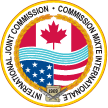The storage capacity of the Great Lakes is 22,950 billion cubic metres of water, or the equivalent of over six million Olympic pools.
Modernization of the Beauharnois–Les Cèdres hydropower complex
The Beauharnois–Les Cèdres hydropower complex
The Beauharnois–Les Cèdres hydropower complex includes some 30 structures such as dams, dikes and control structures. Built between 1911 and 1971, they still regulate the Fleuve Saints‑Laurent (St. Lawrence River), both to allow for the development of the Seaway and to produce hydropower at Les Cèdres and Beauharnois generating stations.
To ensure the longs‑term operability of the structures, Hydro‑Québec assessed them to determine what work will be required in the future. Based on the assessment, it was confirmed that a number of investments must be planned to modernize the Beauharnois–Les Cèdres hydropower complex over the coming decades in order to extend its lifespan.
Generating energy in the Suroît region
The hydropower potential of the Suroît region and the Beauharnois canal has evolved significantly since navigation routes were opened on the Fleuve Saint‑Laurent (St. Lawrence River) between Lac Saint‑François and Lac Saint‑Louis and the Beauharnois–Les Cèdres hydropower complex.
The hydrographic system stretches across the border between Canada and the United States and includes the watershed of the Grands Lacs (Great Lakes) and the Fleuve Saint‑Laurent (St. Lawrence River).
This system is managed by a number of Canadian and American authorities, under the auspices of the International Joint Commission. Its water resources are used for many purposes, including the production of hydroelectricity.
The water that flows into the river travels far before arriving in the Suroît region. The Fleuve Saint‑Laurent (St. Lawrence River) begins at the outlet of Lake Ontario, the last of the five great lakes with regard to the direction of water flow.
Flow regulation limits
The International Lake Ontario‑St. Lawrence River Board (ILO‑SLRB) manages the river’s water supply for the entire watershed, from Lake Ontario to Lac Saint‑Pierre, including the Montréal archipelago area. Regulation plays a role not only for hydroelectric power generation, but also for commercial and recreational navigation, as well as for municipal, industrial and residential water uses. Regulating flow helps mitigate the impacts associated with water level variations in the Fleuve Saint‑Laurent (St. Lawrence River), without, however, completely eliminating them.
The Beauharnois–Les Cèdres complex is a run‑of‑river facility that has no reservoir to hold water drawn from the Moses‑Saunders dam located approximately 60 km upstream. As the owner and operator of the Beauharnois–Les Cèdres complex, Hydro‑Québec works with the Board to ensure the day‑to‑day management of the water, particularly during spring flooding and the ice‑bound season.
Hydro‑Québec and water regulation along the Fleuve Saint‑Laurent (St. Lawrence River)
Watch our expert explain how Hydro‑Québec and its partners manage spring runoff along the Saint‑Laurent.
[In French only]
Partners in regulating the Saint‑Laurent
-

The St. Lawrence Seaway was built under a binational partnership between Canada and the U.S. to allow boats to navigate on the river, and it continues to operate as such. Combined with the eight locks of the Welland Canal (United States), the St. Lawrence Seaway’s 15 locks (which include 2 American locks) allow ships to transit between Montréal and Lake Erie. The St. Lawrence Seaway Management Corporation
 is responsible for the administration of the St. Lawrence Seaway in Canada. This vital partnership is closely associated with developing the hydropower potential of the Suroît region.
is responsible for the administration of the St. Lawrence Seaway in Canada. This vital partnership is closely associated with developing the hydropower potential of the Suroît region. -

In addition to Hydro‑Québec, two other power producers play an important role in regulating the Saint-Laurent: the New York Power Authority (NYPA)
 , the largest state-owned power utility in the United States, and the Ontario Power Generation (OPG)
, the largest state-owned power utility in the United States, and the Ontario Power Generation (OPG) , a government-owned corporation that generates about 50% of the generating capacity in Ontario.
, a government-owned corporation that generates about 50% of the generating capacity in Ontario. -

The International Joint Commission
 (IJC), created under the Boundary Waters Treaty of 1909, has two main responsibilities: to regulate the use of shared waters and to investigate transboundary issues and recommend solutions. Beginning in the 1950s, the IJC approved projects to regulate the waters of the Saint-Laurent to accommodate various needs, including those related to domestic purposes, navigation and hydropower generation.
(IJC), created under the Boundary Waters Treaty of 1909, has two main responsibilities: to regulate the use of shared waters and to investigate transboundary issues and recommend solutions. Beginning in the 1950s, the IJC approved projects to regulate the waters of the Saint-Laurent to accommodate various needs, including those related to domestic purposes, navigation and hydropower generation. -

Through its 1958 Order of Approval, the IJC created the International Lake Ontario-St. Lawrence River Board (ILOSLRB)
 . whose primary function is to ensure that the outflow from Lake Ontario meets the requirements of the IJC Order. The ILOSLRB Board also keeps the public informed about water levels and flow regulation.
. whose primary function is to ensure that the outflow from Lake Ontario meets the requirements of the IJC Order. The ILOSLRB Board also keeps the public informed about water levels and flow regulation. -

Hydro‑Québec experts are actively working to reduce the negative impacts of spring flooding on the public. Learn more about the role of Hydro‑Québec and its partners in spring flood management.
The facilities
Built in 1911, the Beauharnois–Les Cèdres hydropower complex has played a key role in the development of hydroelectricity in Québec. Today, it continues to play a major part in Hydro‑Québec’s generating fleet.
The structures that make up the complex are between 50 and 107 years old. That’s why Hydro‑Québec carried out studies and investigations on all of these structures to determine what work will be required to ensure their long-term operability and extend their lifespan by several decades.
In addition to two generating stations, Beauharnois and Les Cèdres, the complex includes nine dams: Coteau‑1, Coteau‑2, Coteau‑3 and Coteau‑4, Île‑Juillet‑1 and Île‑Juillet‑2, Saint‑Timothée, Pointe‑du‑Buisson and Pointe‑des‑Cascades. It also includes the dikes of the 50‑km‑long Beauharnois canal.
- 9 control structures
- Over 50 kilometers of dikes
- Age of structures: between 50 and 107 years
Info-Project – Modernization of the Beauharnois–Les Cèdres hydropower complex
Stay informed on the stages of the project and the progress of work.
Subscribe to Modernization of the Beauharnois–Les Cèdres hydropower complex newsletterConnect with us
We’re committed to keeping the lines of communication open. Please send us your questions and comments about the project.
